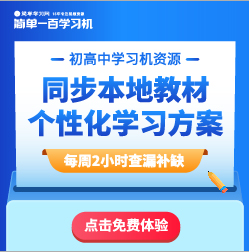■ 摘要:对准备参加高考听力测试的学生来说,听力真题有着不可替代的作用。真题的设计更为真实而具体地体现了高中英语学业质量标准,并诠释了高中英语语言运用能力的难度和范围。然而,真题不是英语学习的全部内容。相对于语言的海洋来说,真题所能覆盖的语言知识、交际主题、能力要求犹如沧海一粟。从英语学科育人的角度来看,英语学科素养的内涵要比高考试题丰富、宏大得多。因此,教师在实际教学中既要使真题充分发挥作用,又不能让其喧宾夺主。
■ 关键词:高考听力真题;高中教学;语言能力
话题和场景分析
2013年至2018年的高考英语全国 I 卷的听力试题涵盖的话题可大致分为日常活动对话、工作学习交流和介绍人物事物等几个方面。
日常活动对话的场景包括与家人和朋友谈论计划和安排,如旅行、交通、天气状况、聚会餐饮、周末活动等,谈论赠送礼物,询问是否拍照,向陌生人或朋友求助、问路、问时间、问物品价格,谈论租房和周边环境等。
工作学习交流方面包括与同事谈论因身体不适不知如何完成工作报告,谈论应聘事宜,谈论因公出差及相关的天气、饮食、家庭成员的安排,谈论对人和事物的评价,如发表对书籍、电影或人物等的看法。
介绍人物事物方面包括介绍小镇的地理和交通情况,根据自身经历介绍大城市与小城市之间交通、娱乐、安全等方面的异同,介绍英国伦敦的茶叶交易市场,介绍美国大学生的就业情况,介绍旅行安排,介绍某地天气情况以及介绍自己对教育的认识等。
每一年试题的话题和场景较之往年都会有相似或重复之处,但绝不雷同,范围都在《普通高中英语课程标准(实验)》所包含的“话题项目表”中。
1、相似的场景,不同的细节
例1(2013年全国 I 卷)
1. What does the man want to do?
A. Take photos.
B. Buy a camera.
C. Help the woman.
听力材料:
M: I’ve got my camera with me. Am I allowed to take photos for you?
W: I think so. It doesn’t say you can’t.
主题:询问是否愿意拍照。
例2(2016年全国 I 卷)
2. What is the woman going to do?
A. Help the man.
B. Take a bus.
C. Get a camera.
听力材料:
M: Excuse me. Do you have time to help take a picture of us?
W: Oh, I’m sorry. I’ve got to catch a bus.
M: That’s OK.
主题:询问是否能够帮助拍照。
以上两个示例的对话场景都与拍照有关,但是情节的安排不同,所使用的词汇也不同。以“拍照”为例,例1使用的是“take photos”,例2使用的是“take a picture”。相似的例子还有关于用餐、天气和旅行交通的场景。
2、相同的场景,相似的细节
例3(2015年全国 I 卷)
1. What time is it now?
A. 9:10
B. 9:50
C. 10:00
听力材料:
W: What time is your train leaving?
M: It leaves at ten. I’ve got fifty minutes left.
W: You’d better hurry, or you won’t be able to catch it.
例4(2018年全国 I 卷)
3. When does the train leave?
A. At 6:30.
B. At 8:30.
C. At 10:30.
听力材料:
W: We’d better be going now, or we’ll be late for the train.
M: No rush. It’s 8:30 now. We still have two hours.
两段对话的主题、场景和提问方式都非常相近,情节相似,但用词不同。
3、相似的情节,不同的提问角度
例5(2018 年全国 I 卷)
2. What can we say about the woman?
A. She’s generous.
B. She’s curious.
C. She’s helpful.
听力材料:
M: Hello, do you have The Best of Mozart?
W: Um, sorry, we’ve just sold out. But we can order one for you. If you give us your number, we’ll call you when the CD arrives.
在听力试题中,购物的场景屡见不鲜。往年命题者多就说话者所购买的商品或商品价格设问,但2018年的试题则要求听众对说话者进行评价,设问的角度别具一格。
能力要求分析
就高考对听力的要求来说,各省市都要求考生至少具备以下四点能力:
理解主旨要义;
获取事实性的具体信息;
对所听内容进行简单推断;
理解说话者的意图、观点和态度。个别省市,如北京市,还考查考生用英语记录信息的能力。
每年高考英语听力试题的设问都围绕着这些能力进行考查,其结果就是每一年听力试题的设问都有相似之处。
1、相似的提问方式
例6(2013年全国 I 卷)
4. What will Celia do?
A. Find a player.
B. Watch a game.
C. Play basketball.
听力材料:
M: Celia, you see those girls over there? They need another player for a basketball game. Would you like to join them?
W: Seems like it’s a game for fun.
Sure, I’ll be there in a minute.
例7(2014年全国 I 卷)
2. What will the man do for the woman?
A. Repair her car.
B. Give her a ride.
C. Pick up her aunt.
听力材料:
W: Oh my! My car broke down, and I have to meet my aunt at the railway station before noon.
M: You’re lucky. I can drop you off
on my way.
例8(2015年全国 I 卷)
3. What will the man do?
A. Attend a meeting.
B. Give a lecture.
C. Leave his office.
听力材料:
M: Now, let’s stop talking and get going. I need to be in my office in fifteen
minutes, or I’ll be late for a meeting.
例9(同例2)
例10(2017年全国 I 卷)
5. What is the man going to do?
A. Go on the Internet.
B. Make a phone call.
C. Take a train trip.
听力材料:
W: I wish I knew the times of the trains to London. But our phone’s out of order.
M: Don’t worry, Grandma. I’ll find out for you on the Internet.
W: Thank you!
例11(2018年全国 I 卷)
1. What will James do tomorrow?
A. Watch a TV program.
B. Give a talk.
C. Write a report.
听力材料:
W: James, you’ve been watching TV for the whole evening. What’s on?
M: It’s a science program on the origin of the universe. I’ll give a presentation on it in my class tomorrow.
从以上六个例题可知,从2013年至2018年,高考听力试题连续六年都提出了“What is ... going to do?”之类的问题,考查考生能否从对话中推断出某人接下来要做的事。虽然每年试题的对话话题和场景不同,但是考生在听的过程中所需的解题思路十分相似。
(1)试题选项的表述通常使用同义表达或是对原话的归纳
例6的正确选项“Play basketball.”即是对听力材料中“They need another player for a basketball game. Would you like to join them?”的归纳。例11中的正确选项“Give a talk”则是听力材料中“I’ll give a presentation on it”的同义表达。
(2)答题要求把握对话情景和语篇的整体内容
高考听力命题常用的策略之一是添加冗余信息,创造特殊会话含义,加大提取信息的难度(王文赞,2013)。
例如,例6的问题是“What will Celia do?”听力材料的对话场景是男生指着远处一群打篮球的女孩问Celia 是否愿意加入她们(“Would you like to join them?”),Celia 的回答十分肯定:“Sure, I’ll be there in a minute.”
语言交际原则之一是“简明扼要,避免冗长”(何兆熊,2000)。如果对话遵守了这一原则,问题会更容易被回答。但此对话中出现了较多冗余信息,如:“you see those girls over there? They need another player for a basketball game.” “Seems like it’s a game for fun.”
考生在听录音时,如果不能把握语篇的整体内容,只听到了零星片段,如:“Sure, I’ll be there in a minute.”那么就会很难从题目给出的三个备选项中找出正确答案。
(3)答题要求在语境中正确理解句子的意义
例8听力材料中的“I need to be in my office in fifteen minutes, or I’ll be late for a meeting.”的意思是“I need to attend a meeting in my office” ,即“我需要去办公室参加一个会议” 。
再如,例10听力材料中的“I wish I knew the times of the trains to London.”的意思是“我想知道去伦敦的列车时刻表”。
其他常见的提问方式包括以 what、who、whose、which、how、when、where、why、how many / much、how long / far 等引导的问题。其中复现频率较高的提问方式有:
What is the probable relationship between the speakers?
Where does the conversation probably take place?
How does the speaker feel about...?
What does the speaker mainly talk about?
因为提问的方式相似,但听到的内容不同,所以考生会感到每一年的高考听力试题都在“情理之中,意料之外”。“情理之中”指的是试题的问题都很相似,“意料之外”指的是考生所听到的内容总是新鲜。
2、近年频繁出现的设题
例12(2016年全国 I 卷)
16. What does the woman think of Gordon’s coming weekend?
A. Relaxed.
B. Boring.
C. Busy.
例13(2016年全国 I 卷)
18. What does the speaker say about the college job market this year?
A. It’s unpredictable.
B. It’s quite stable.
C. It’s not optimistic.
例14(2017年全国 I 卷)
1. What does the woman think of the movie?



